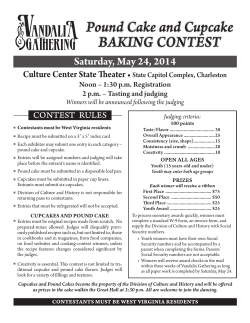
How to Convert a Glow Powered Airplane to Brushless Electric
How to Convert a Glow Powered Airplane to Brushless Electric Twin Cities Radio Controllers March 9, 2010 What resources are available? With all of the resources out there, where do you begin? RCGroups - http://www.rcgroups.com/glowto-electric-conversions-247/ RCUniverse http://www.rcuniverse.com/forum/forumid_13 2/tt.htm Agenda There are numerous vendors that advertise power systems designed to replace a generic glow powered engine (E-flite, Nitroplanes, etc.) This presentation is designed to provide you with the tools to select a power system based on weight, flying style, and aircraft type. Hopefully this will also save you money. Getting Started The correct power system should be based on what airplane you have and your flying style. 50-70 watts per pound; Minimum level of power for decent performance, good for lightly loaded slow flyer and park flyer models 70-90 watts per pound; Trainer and slow flying scale models 90-110 watts per pound; Sport aerobatic and fast flying scale models 110-130 watts per pound; Advanced aerobatic and high-speed models 130-150 watts per pound; Lightly loaded 3D models and ducted fans 150-200+ watts per pound; Unlimited performance 3D models Finding power Let’s use the example of the Great Planes Ultrasport 40 Plus kit http://www3.towerhobbies.com/cgibin/wti0001p?&I=LXCZR8&P=0 The Specs say: 5.3-5.7 lbs Finding Power Based on the flying style of Sport/Sport Aerobatics, I think we should shoot for about 125 watts/pound. When we convert to E-Power, the weight will most likely increase a bit. I would add about 40% to the weight of the engine. A typical .46 engine weighs about 16 oz, so if we add 40% then we will add about 6 oz to the weight of the plane. Finding Power At 125 watts per pound and 5.9 lbs, we need about 740 Watts. So… where do we go from here? Finding a motor We need to find the right motor for our application. A good place to start would be to determine the weight of the motor we will need. A good rule of thumb for Brushless Outrunners is a motor putting out about 3 watts per gram of mass. Finding our motor At 3 watts per gram of mass, we should choose a motor weighing at least 245 grams. If you start looking for motors in this size range, you will see that most of them have a Kv of 400-750 Rpm/volt I like the Turnigy SK line of motors from Hobbyking.com - let’s try the 42-60 500 Looking at our motor – 42-60 500 The specs on the motor are: 290g 500Kv It can handle 4-7 lipo cells So how do we determine what battery, ESC, and Prop to use with it? Determining the rest I now look at the type of prop the original glow model would use. Looking at the listing for the plane, it says to use a .40-.52 2-stroke, which means swinging an 11-13” prop. 12 inch props are pretty common and in the middle of the range, so it will give us some room to wiggle and make sure we have the ground clearance on the plane to fit. Determining the rest Given that we want to run our motor much like that of a glow engine, we probably want to run it around the same speed. To do that we want to find a nominal speed to shoot for and adjust our battery voltage to meet that. 12k RPM 12,000/500 Kv = 24. 24/4v-nom = 6S Determining the rest I like to use DriveCalc, which is a free piece of software, much like MotoCalc that gets updated by people around the world. http://www.drivecalc.de/ With this calculator, you can plug in your motor, prop, ESC and Battery and see power curves and generate thrust and cruise velocity. Where are we? From the two previous slides, you should note the following: The first is the 12x8 APC E, the Second is the 13x6 APC Sport In either case, our thrust is over 6.5 lbs and our speed is over 43 mph Where are we? Note the following two snapshots of the same props 12x8 and 13x6 respectively. Note the current consumption at WOT – both are under 40A and the drive efficiencies are both over 85%. We should be able to get by with a decent 40A ESC. Where are we? Here is the last important piece of the puzzle, how heavy is it and how long will it fly. With our 3300 mah 20/30C battery, we should be able to rocket around the skies at full throttle for about 5 minutes. Most people choose a battery that will get them 8-10 minutes, but most people won’t fly at full throttle most of the time. So how much will it cost? Here is the bill of materials from HobbyKing Turnigy SK 42-60 500 motor - $29.99 Turnigy Plush 40A ESC – 23.10 Turnigy 4.0 6cell 4000 mah 20/30C battery (for a little longer runtime) – $42.90 Sum Total – $95.99 Why would we do this!? No need to break-in the motor No need to clean up the plane afterward (except to clean off the dead bugs) No need to buy glow fuel To irritate the anti-electric folks ☺ Please Note: This presentation was not endorsed or sponsored by Hobbyking.
© Copyright 2025





















